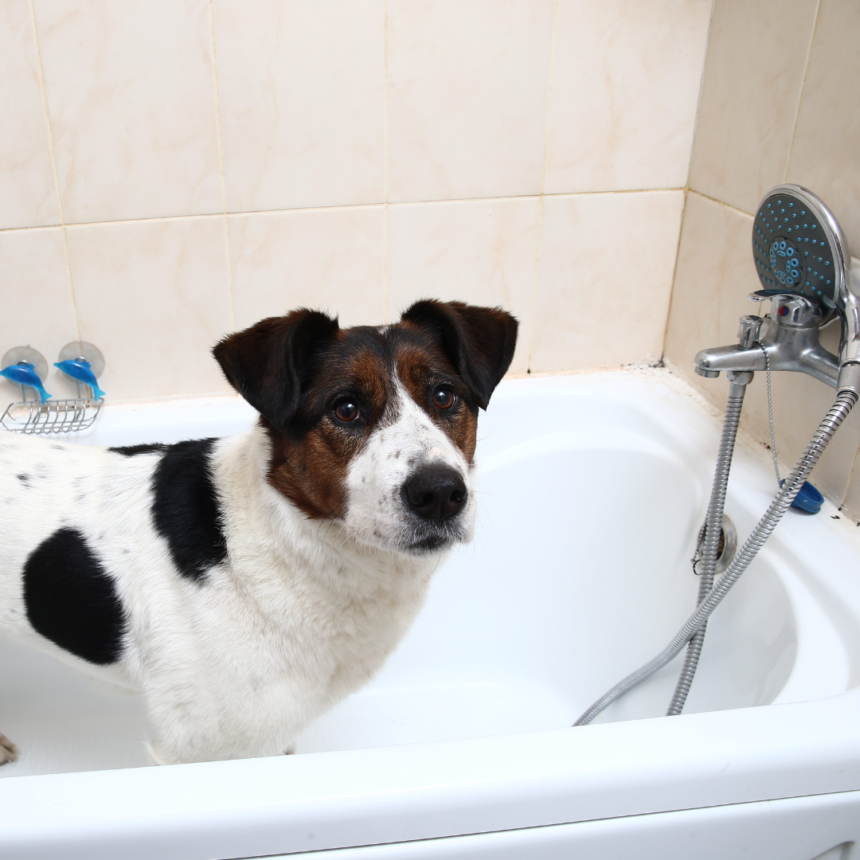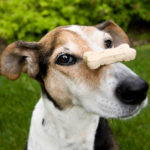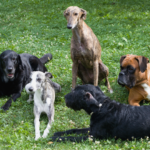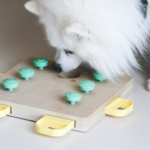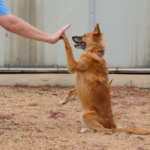Introduction
Grooming is an essential aspect of your dog’s well-being, but bath time can often be a stressful experience for both pets and owners. This guide aims to transform grooming into a Zen-like ritual, providing insights and practical solutions for a peaceful dog bath time routine.
Recognizing Anxiety and Fear
Bath time can be a challenging ordeal for many dogs, and understanding the signs of anxiety is crucial for ensuring a stress-free grooming experience. Dogs communicate distress in various ways, and recognizing these signals is essential for creating a positive bathing environment.
One evident sign of anxiety is excessive panting. If your dog starts to breathe rapidly, it may indicate heightened stress levels. Additionally, trembling or shivering, even in a warm environment, can be a clear sign of discomfort or fear. These physical manifestations showcase the emotional toll bath time can take on your furry friend.
Watch for behavioral changes, such as attempting to escape or hide. Dogs may exhibit avoidance behaviors, attempting to flee the bath area or finding refuge in secluded spots. Whining, whimpering, or excessive barking are vocal expressions of their unease.
Observing body language is crucial. Pinned-back ears, a tucked tail, or avoiding eye contact are signs of fear and submission. In extreme cases, dogs may display aggressive behavior as a response to their anxiety.
Positive Reinforcement Techniques
Introducing positive reinforcement during grooming, especially during dog bath time, is a transformative approach that can turn a potentially stressful experience into a positive and enjoyable one for both you and your furry companion. This method leverages the power of rewards, such as treats and praise, to reinforce positive behaviors, creating a harmonious environment during grooming sessions.
One of the key elements in implementing positive reinforcement is understanding your dog’s individual needs. Each dog is unique, with different temperaments, past experiences, and sensitivities. Recognizing and respecting these individual differences lays the foundation for a tailored and effective positive reinforcement strategy.
Resistance to grooming activities, particularly bath time, is a common challenge that positive reinforcement seeks to address. Negative associations from past experiences or inherent anxiety can contribute to reluctance during grooming. By gradually introducing grooming tools, water, and the bath environment while offering high-value treats and praise for calm behavior, you can replace negative associations with positive ones.
Patience plays a pivotal role in building trust and reinforcing positive associations during bath time. Initial fear or anxiety may be displayed by your dog, but a patient and gradual introduction to the grooming process can significantly reduce stress. Allow your dog to explore grooming tools, reward calm behavior, and incrementally progress to more involved grooming tasks. Celebrate small victories, reinforcing the positive association with each step.
Creating a Relaxing Environment
The secret to a successful grooming session lies in cultivating a calm and relaxed environment. Dogs are sensitive to their surroundings, and a tranquil setting can significantly impact their behavior during bath time.
Imagine transforming your bathroom into a spa-like haven for your furry friend. Start by preparing all necessary items beforehand to minimize disruptions. Lay out towels, have the shampoo and other grooming tools within reach, and ensure the water temperature is just right. A calm setting begins with thoughtful preparation.
Consider the lighting in the bathing area. Soft, natural light can create a soothing atmosphere, while harsh or bright lights may cause anxiety. Play gentle background music or use white noise to drown out any sudden, loud sounds that might startle your dog.
Maintaining a consistent routine can also contribute to a calm bath time. Dogs thrive on predictability, so establishing a regular grooming schedule helps them know what to expect. Positive reinforcement, such as treats or praise, can further reinforce the idea that bath time is a positive and rewarding experience.
Choosing the Right Products
Selecting the right grooming products plays a pivotal role in ensuring a positive and comfortable experience for your furry friend during bath time. When it comes to shampoos, conditioners, and grooming tools, a thoughtful and informed approach can make a significant difference in promoting your dog’s well-being.
One of the key considerations in choosing grooming products is to opt for those specifically tailored to your dog’s individual needs. Different breeds and coat types have varying requirements, and selecting products designed for their specific characteristics ensures optimal results. For example, dogs with sensitive skin may benefit from hypoallergenic or fragrance-free shampoos and conditioners.
Hypoallergenic products are formulated to minimize the risk of allergic reactions, making them an excellent choice for dogs with skin sensitivities. Natural ingredients further contribute to a gentle and nourishing grooming routine. Look for products that feature botanical extracts, aloe vera, or oatmeal, as these can soothe the skin and provide added hydration.
When it comes to grooming tools, consider the type of coat your dog has. Long-haired breeds may require brushes with longer bristles to prevent matting, while short-haired dogs may benefit from rubber grooming tools that help remove loose fur. Always choose tools with rounded edges to avoid causing any discomfort or injury to your pet’s skin.
Drying and Pampering
The post-bath drying process is a crucial aspect of your dog’s grooming routine, and understanding the right techniques and tools is key to ensuring their comfort and well-being. After a refreshing bath, it’s essential to approach the drying process with care and attention.
Firstly, opt for gentle drying techniques to avoid causing stress or discomfort to your furry friend. Patting your dog dry with a soft towel is a simple yet effective method. Avoid vigorous rubbing, as this can lead to tangles, especially in dogs with longer coats. For a more thorough drying, consider using a low-heat setting on a pet-friendly hairdryer, maintaining a safe distance to prevent overheating.
Selecting the right drying tools is equally important. Invest in a quality dog-friendly hairdryer with adjustable settings to control the temperature and airflow. Some dogs may be sensitive to the noise of the dryer, so it’s beneficial to introduce them to the sound gradually and offer treats or praise to create a positive association.
Neglecting the drying step can pose potential risks, especially in dogs with dense or double coats. Leaving your dog damp can lead to skin issues, matting, or even fungal infections. Ensure that your dog is thoroughly dry, especially in areas where moisture can be trapped, such as under the ears or between paw pads.
Post-bath pampering goes beyond just drying. Take the opportunity to bond with your dog by offering gentle brushing and, if applicable, applying a dog-friendly conditioner to maintain a healthy coat. This not only enhances the grooming experience but also contributes to the overall well-being of your cherished companion.
Conclusion
With these stress-free tips, you’re well-equipped to make bath time a serene and enjoyable activity. From proper preparation and gentle handling to using the right products, your pup will not only look forward to bath time but will also benefit from a clean and healthy coat. Embrace the opportunity to strengthen your bond, reinforce trust, and instill a sense of calm in your canine companion. As you embark on this grooming journey, may each bath be a moment of Zen, fostering a happy and harmonious relationship between you and your four-legged friend.


